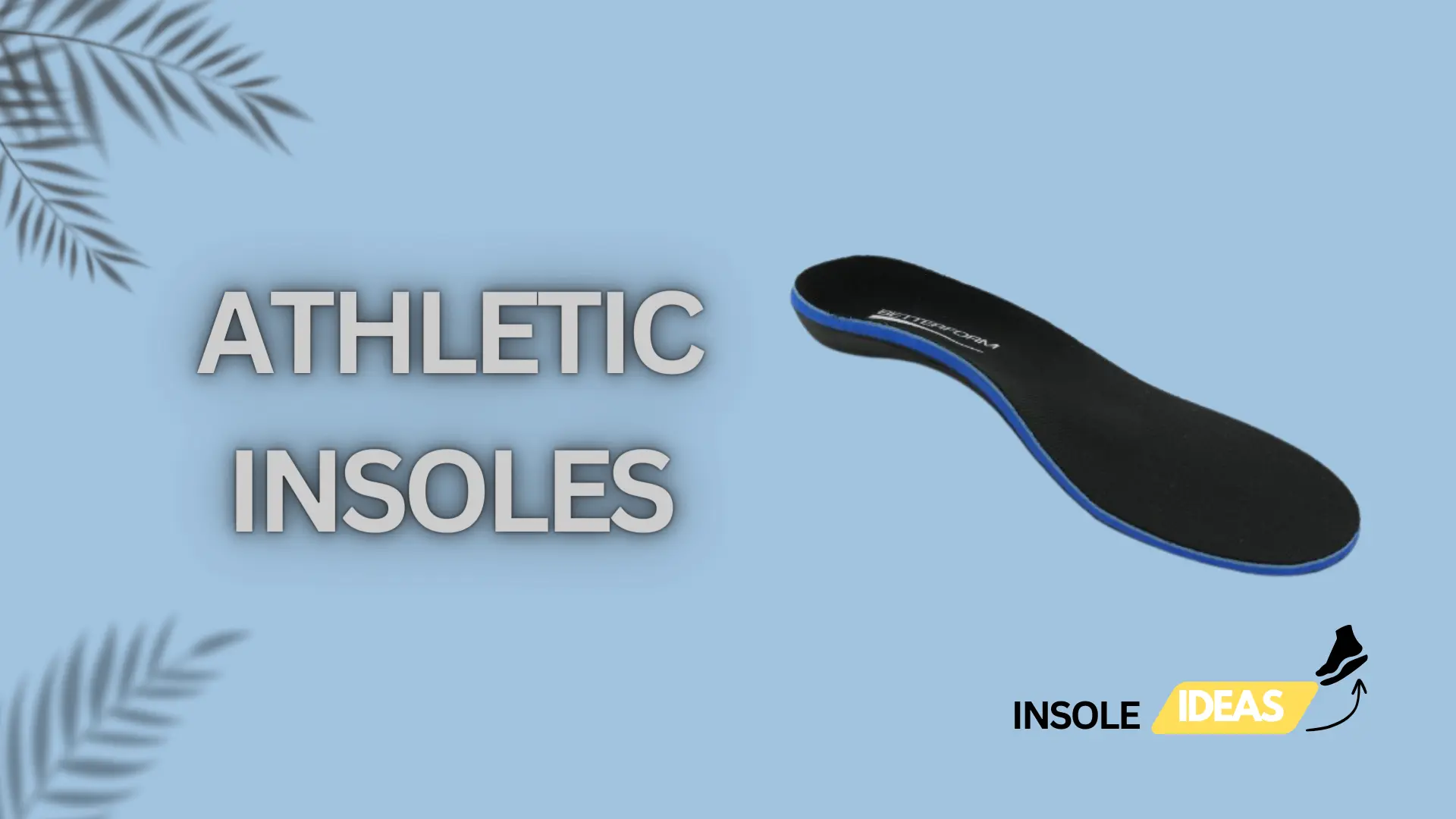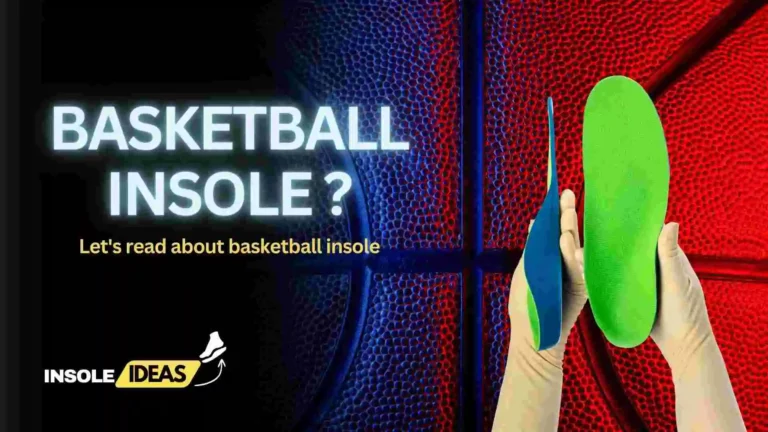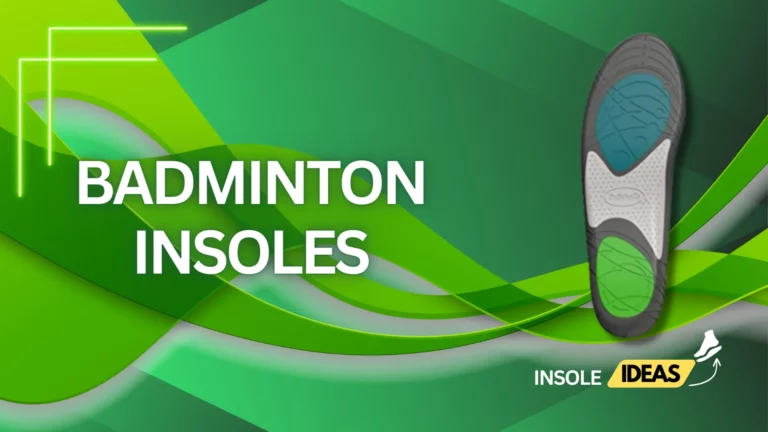Ultimate Guide to Athletic Insoles
Athletic insoles are specialized inserts placed inside shoes to provide additional support, cushioning, and stability during physical activities. They’re designed to enhance comfort, alleviate stress on the feet, and minimize the risk of injuries commonly associated with sports.
Understanding Athletic Insoles
Athletic insoles, also known as sports or performance insoles, are removable footbeds made of various materials like foam, gel, or rigid plastics. They’re crafted to fit inside athletic shoes, offering additional arch support and cushioning. These insoles aim to optimize foot biomechanics, reducing strain on muscles and joints during movement.
Importance in Sports and Physical Activities
The significance of athletic insoles in sports and physical activities lies in their ability to mitigate common foot-related issues. They absorb shock, redistribute pressure, and provide stability, crucial for athletes engaged in high-impact sports. By improving alignment and reducing excessive pronation or supination, they aid in preventing injuries and optimizing performance.
Ultimate Guide to Athletic Insoles
Athletic insoles offer an array of advantages beyond mere comfort. They contribute significantly to an athlete’s performance, injury prevention, and overall foot health.
Enhanced Comfort and Support
Athletic insoles provide tailored support, reducing discomfort and fatigue during prolonged physical activities. The additional cushioning alleviates pressure points, ensuring a more comfortable experience while enhancing shock absorption.
Injury Prevention and Rehabilitation
One of the primary benefits is injury prevention. By offering proper support and aligning the foot correctly, athletic insoles assist in preventing common sports-related injuries including stress fractures, shin splints, and plantar fasciitis. Additionally, they aid in rehabilitation by providing stability and support during recovery.
Improved Performance
Athletic insoles optimize biomechanics, allowing for better distribution of force and efficient energy transfer. This enhancement in foot alignment and stability can result in improved balance, agility, and overall sports performance.
Choosing the Right Athletic Insoles
Selecting the ideal athletic insoles involves considering various factors that align with personal needs and the intended activities.
Foot Type and Pronation
Understanding your foot type—whether you have high arches, flat feet, or a neutral arch—is crucial. This knowledge helps in choosing insoles that offer the right support and alignment for your specific foot structure. Pronation (the inward rolling of the foot) also determines the type of support needed, be it for overpronation or supination.
Activity-Specific Needs
Different physical activities demand distinct types of support and cushioning. For example, running might require insoles with more shock absorption, while court sports like basketball or tennis might prioritize lateral stability and quick movements.
Material and Durability
The materials used in athletic insoles impact their comfort, longevity, and support. Foam-based insoles provide cushioning, while rigid plastics offer more structural support. Durability is essential, especially for high-impact activities, ensuring the insoles maintain their functionality over time.
Athletic Insoles for Injury Prevention
Athletic insoles play a pivotal role in preventing injuries commonly associated with sports and physical activities.
Reducing Impact Stress
Insoles designed with shock-absorbing materials minimize the impact on the feet and lower limbs, thereby reducing stress on muscles, tendons, and joints. This helps prevent overuse injuries caused by repetitive movements.
Correcting Biomechanical Issues
Many foot-related injuries stem from biomechanical irregularities, such as overpronation or supination. Properly designed insoles can address these issues by providing support where it’s needed, correcting alignment, and reducing the risk of injury.
Supporting Healing and Recovery
Injuries often require a period of rest and rehabilitation. Athletic insoles can aid in this process by providing added support and stability to the injured area, allowing for a more conducive environment for healing while preventing further strain.
Custom Orthotics for Athletes
Custom orthotics are personalized insoles tailored to an individual’s foot structure, providing precise support and alignment.
Personalized Support
Unlike off-the-shelf insoles, custom orthotics are crafted based on a detailed assessment of an individual’s foot shape, gait, and specific needs. This personalized approach ensures maximum support and comfort, particularly beneficial for athletes with unique foot structures or medical conditions.
Targeted Correction
Custom orthotics can address specific biomechanical issues, such as excessive pronation or supination, by providing targeted correction. This aids in optimizing foot function and reducing the likelihood of injuries associated with irregularities in foot mechanics.
Enhanced Performance
The tailored support and alignment offered by custom orthotics contribute to improved biomechanics, translating to enhanced athletic performance. They help in maximizing energy transfer, minimizing fatigue, and optimizing movement efficiency.
Insertion Techniques for Insoles
Proper insertion of athletic insoles ensures they function effectively and provide the intended benefits.
Clean Shoe and Insole Surfaces
Before insertion, ensure both the shoe’s insole and the athletic insole are clean and free from debris. This promotes a secure fit and prevents discomfort caused by uneven surfaces.
Aligning with Shoe Contours
Place the athletic insole within the shoe, aligning it with the contours of the shoe’s existing insole. Ensure it sits flat and doesn’t create any folds or creases that could cause discomfort or affect performance.
Testing Comfort and Fit
After inserting the insole, wear the shoes and assess the comfort and fit. Make necessary adjustments if the insole feels too tight, loose, or causes any discomfort during movement.
Popular Athletic Insole Brands
Several renowned brands offer a range of athletic insoles, each with its unique features and targeted benefits.
Superfeet: Known for their supportive and performance-oriented insoles catering to various activities.
Dr. Scholl’s: Offers a wide range of affordable, mass-market insoles focusing on comfort and support.
Sof Sole: Provides insoles with diverse cushioning and support options suitable for different sports.
Powerstep: Specializes in podiatrist-designed insoles for arch support and stability.
Spenco: Offers insoles featuring advanced cushioning and shock absorption technologies.
Innovative Features and Technologies
Leading brands continually innovate, introducing features that enhance comfort, support, and performance.
Gel Cushioning: Brands often incorporate gel inserts for superior shock absorption and comfort.
Arch Support Systems: Many insoles feature arch support mechanisms catering to various arch types.
Moisture-Wicking Materials: Insoles made from materials that Dry and comfy insoles composed of materials that wick away moisture.
Anti-Odor Technology: Certain brands integrate materials and treatments to combat odor-causing bacteria.
Impact of Insoles on Sports Performance
Athletic insoles have a significant impact on an athlete’s overall performance by addressing comfort, support, and biomechanical alignment.
Enhanced Comfort and Endurance
Improved comfort translates to enhanced endurance during extended periods of activity. Reduced discomfort and fatigue allow athletes to focus on performance without distractions.
Stability and Injury Prevention
Insoles that offer stability and correct alignment minimize the risk of injuries caused by improper foot mechanics. This stability is crucial, especially during high-impact sports, reducing the likelihood of strains or sprains.
Improved Biomechanics and Efficiency
Optimized foot alignment and support result in improved biomechanics, leading to more efficient movement patterns. This efficiency can contribute to better speed, agility, and overall athletic performance.
Benefits of Athletic Insoles
The advantages offered by athletic insoles extend beyond mere comfort, encompassing injury prevention and performance enhancement.
Enhanced Comfort and Support
Dry and comfy insoles are composed of materials that wick away moisture. reducing discomfort and fatigue during prolonged physical activities. They distribute pressure evenly, alleviating stress on specific areas of the foot and enhancing overall comfort.
Injury Prevention and Rehabilitation
A key benefit lies in injury prevention. These insoles help in reducing the risk of common sports-related injuries like plantar fasciitis, shin splints, or stress fractures. Additionally, they aid in rehabilitation by offering support and stability during the recovery phase.
Improved Performance
Athletic insoles optimize foot biomechanics, promoting better alignment and stability. This can lead to enhanced balance, agility, and overall sports performance by maximizing energy transfer and minimizing inefficiencies in movement.
Factors to Consider When Choosing Athletic Insoles
Selecting the right athletic insoles involves assessing several key factors that align with individual needs and activities.
Foot Type and Pronation
Understanding one’s foot type (high arches, flat feet, or neutral arches) and pronation pattern (overpronation, neutral, or supination) aids in choosing insoles that offer the necessary support and alignment.
Activity-Specific Needs
Different activities demand varying levels of support and cushioning. Tailoring insoles to specific activities ensures optimal performance and comfort during those pursuits.
Material and Durability
Insole materials impact comfort, durability, and support. Choosing materials that align with personal preferences and activity requirements ensures longevity and effectiveness.
How to Use Athletic Insoles
Proper usage and maintenance of athletic insoles are essential for deriving their maximum benefits.

Proper Insertion Techniques
Cleanliness: Ensure both the shoe’s insole and the athletic insole are clean before insertion to prevent discomfort or uneven surfaces.
Alignment: Fit the athletic insole snugly, aligning it with the contours of the shoe’s existing insole for proper support and comfort.
Testing Fit: Wear the shoes to assess comfort and fit. Adjust if needed to avoid discomfort during activities.
Maintenance and Care
Regular Cleaning: Clean insoles periodically to prevent odor and maintain hygiene. Follow manufacturer guidelines for cleaning specific materials.
Replacement: Replace insoles periodically, especially if they show signs of wear or reduced support.
Popular Brands and Technologies
Several leading brands offer diverse technologies and features in their athletic insoles, catering to specific needs and preferences.
Overview of Leading Brands
Renowned brands like Superfeet, Dr. Scholl’s, Sof Sole, Powerstep, and Spenco offer a range of insoles, each with distinct features and targeted benefits.
Innovative Features and Technologies
Gel Cushioning: Many brands incorporate gel-based inserts for superior shock absorption and comfort.
Arch Support Systems: Insoles feature varied arch support mechanisms catering to different foot arch types.
Moisture Management: Materials that wick away moisture, ensuring feet remain dry and comfortable.
Anti-Odor Technology: Insoles integrate materials and treatments to prevent bacterial growth and odor.
Conclusion: Performance and Comfort with Athletic Insoles
Athletic insoles serve as vital accessories for athletes, providing enhanced comfort, injury prevention, and improved performance. Choosing the right insoles based on foot type, activity-specific needs, and quality materials ensures athletes experience the maximum benefits, optimizing their performance and comfort during sports and physical activities. Regular maintenance and adherence to proper usage guidelines further contribute to the longevity and effectiveness of these essential foot accessories.








One Comment